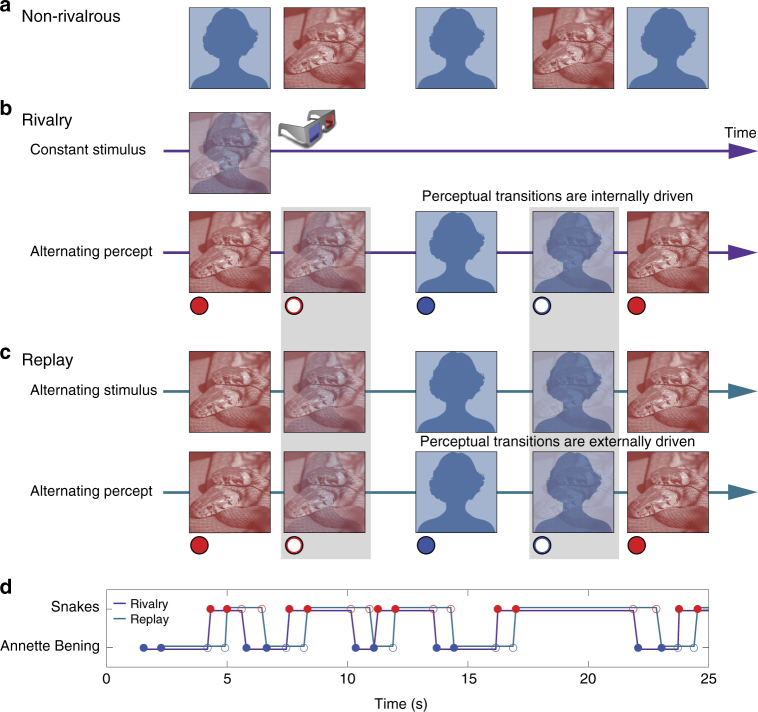Fig. 1.
Experimental paradigm and behavior. a Non-rivalrous condition. Images were presented binocularly to both eyes, hence no binocular conflict. In this example a picture of snakes and a picture of the actress Annette Bening (marked by a placeholder due to copyrights issues) were used. b Binocular rivalry condition. A distinct constant image presented to each eye using red-blue goggles (top), resulted in spontaneous perceptual alternations (bottom) reported by the patients by holding (filled circles) and releasing (empty circles) two assigned buttons, for the beginning of the dominance and transition periods, respectively. Gray rectangles mark the report of transition onset towards the suppressed image (end of dominance period of the other image; button release), which is the behavioral event on which the analysis was focused. c Matched-duration replay condition. Internally driven perceptual alternations during rivalry were mimicked by gradual and duration-matched physical (externally driven) alternations on screen, presented binocularly to both eyes, with an identical behavioral task. d Rivalry (purple) and replay (cyan) behavioral report example. Note how closely the replay reports follow the rivalry reports with a delay of 0.7 ± 0.1 s. An amygdala neuron from this session is presented in Fig. 3

